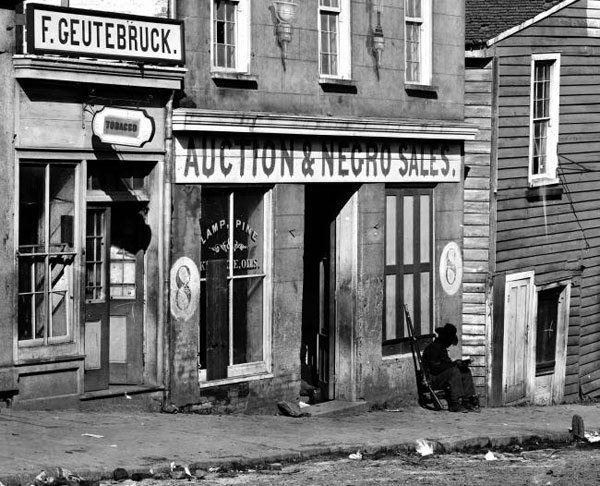
February 3, 2018; Washington Post
It may not be surprising, but, as Valerie Strauss points out in the Washington Post, when it comes to slavery, US history classes tend to celebrate the Emancipation Proclamation and the Underground Railroad while downplaying slavery’s violence, dehumanization, and continuing impact today. The result is less knowledgeable high school graduates.
Strauss, drawing on a new report titled “Teaching Hard History: American Slavery,” authored by the Teaching Tolerance project of the nonprofit Southern Poverty Law Center, highlights the following report findings:
- Only 8 percent of U.S. high school seniors could identify slavery as the central cause of the Civil War.
- 68 percent of the surveyed students did not know that slavery formally ended only with an amendment to the Constitution.
- Only 22 percent of the students could correctly identify how provisions in the Constitution gave advantages to slaveholders.
- Only 44 percent of the students answered that slavery was legal in all colonies during the American Revolution.
The report, notes Strauss, also identifies seven key problems with how slavery history is taught:
- “We teach about slavery without context, preferring to present the good news before the bad. In elementary school, students learn about the Underground Railroad, about Harriet Tubman or other ‘feel good’ stories, often before they learn about slavery.”
- “We tend to subscribe to a progressive view of American history that can acknowledge flaws only to the extent that they have been addressed and solved.”
- “We teach about the American enslavement of Africans as an exclusively southern institution.”
- “We rarely connect slavery to the ideology that grew up to sustain and protect it: white supremacy.”
- “We often rely on pedagogy poorly suited to the topic. When we asked teachers to tell us about their favorite lesson when teaching about slavery, dozens proudly reported classroom simulations. Simulation of traumatic experiences is not shown to be effective as a learning strategy and can harm vulnerable children.”
- “We rarely make connections to the present.”
- “We tend to center on the white experience when we teach about slavery. Too often, the varied, lived experience of enslaved people is neglected while educators focus on the broader political and economic impacts of slavery.”
In particular, the “progressive view of American history” is highly seductive. How seductive? Some NPQ readers may recall that, upon his election as president in 2008, Barack Obama said,
Sign up for our free newsletters
Subscribe to NPQ's newsletters to have our top stories delivered directly to your inbox.
By signing up, you agree to our privacy policy and terms of use, and to receive messages from NPQ and our partners.
This election had many firsts and many stories that will be told for generations. But one that’s on my mind tonight’s about a woman who cast her ballot in Atlanta. She’s a lot like the millions of others who stood in line to make their voice heard in this election except for one thing: Ann Nixon Cooper is 106 years old…
And tonight, I think about all that she’s seen throughout her century in America—the heartache and the hope; the struggle and the progress; the times we were told that we can’t, and the people who pressed on with that American creed: Yes, we can.
Obama then went on to highlight triumphs of the past 100 years, conveniently leaving out less triumphant moments—such as the rise of US mass incarceration that had occurred since the 1970s. Or the continuing impact of redlining which though formally ended in 1968 still affects access to credit in communities of color. Or the backsliding on integration that has led to rising de facto school segregation.
Of course, it is understandable that Obama would deliver a rose-colored-glasses version of US history on the night of his electoral triumph. But if our classrooms teach only about the triumphs and not the tragedies, then they provide a highly incomplete picture. And this affects the work of nonprofits every day, especially racial justice nonprofits, who must work to, in essence, reeducate Americans who have only learned half the story. It may be worth recalling that Dr. Martin Luther King Jr. said, “We shall overcome”—not “We have overcome.”
“The point” the report adds, “is not to teach American history as a chronicle of shame and oppression. Far from it. The point is to tell American history as a story of real human beings, of power, of vast economic and geographical expansion, of great achievements as well as great dispossession, of human brutality and human reform.”—Steve Dubb













